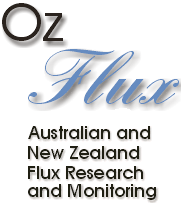Full description
The Tumbarumba flux station is located in the Bago State forest in south eastern New South Wales. It was established in 2000 and is managed by CSIRO Marine and Atmospheric Research. The Tumbarumba flux station is supported by TERN and the DCCEE through the ACCSP. The Tumbarumba flux station is located in the Bago State forest in south eastern New South Wales: 35° 39' 23.8" S 148° 09' 06" E The forest is classified as wet sclerophyll, the dominant species is Eucalyptus delegatensis, and average tree height is 40m. Elevation of the site is 1200m and mean annual precipitation is 1000mm. The Bago and Maragle State Forests are adjacent to the south west slopes of southern New South Wales and the 48,400 ha of native forest have been managed for wood production for over 100 years. The instrument mast is 70m tall. Fluxes of heat, water vapour and carbon dioxide are measured using the open-path eddy flux technique. Supplementary measurements above the canopy include temperature, humidity, windspeed, wind direction, rainfall, incoming and reflected shortwave radiation and net radiation. Profiles of temperature, humidity and CO2 are measured at seven levels within the canopy. Soil moisture content is measured using Time Domain reflectometry, while soil heat fluxes and temperature are also measured. Hyperspectral radiometric measurements are being used to determine canopy leaf-level properties. Tumbarumba OzFlux tower site is part of the TERN OzFlux and TERN Supersite networks. Contact Dr. Will Woodgate CSIRO Land and Water, Scientific Contact GPO Box 1700 Canberra ACT 2601 AustraliaData time period: 2001 to 31 12 2017
User Contributed Tags
Login to tag this record with meaningful keywords to make it easier to discover
- Handle : 102.100.100/14241

- Local : MONe8acc2d7-a387-4582-8657-b793e5575716


